N. Tintarev
Navigating the Thin Line: Examining User Behavior in Search to Detect Engagement and Backfire Effects
Jan 20, 2024
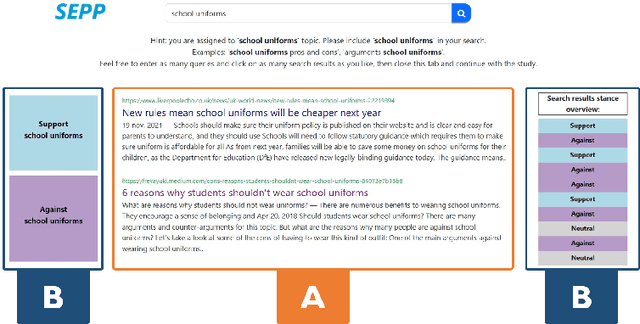
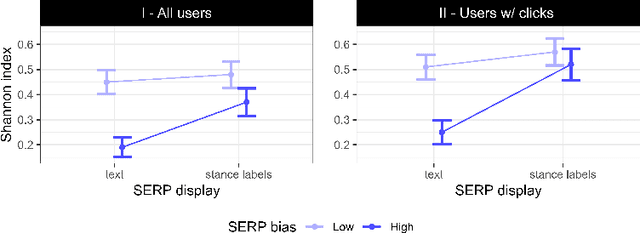

Abstract:Opinionated users often seek information that aligns with their preexisting beliefs while dismissing contradictory evidence due to confirmation bias. This conduct hinders their ability to consider alternative stances when searching the web. Despite this, few studies have analyzed how the diversification of search results on disputed topics influences the search behavior of highly opinionated users. To this end, we present a preregistered user study (n = 257) investigating whether different levels (low and high) of bias metrics and search results presentation (with or without AI-predicted stances labels) can affect the stance diversity consumption and search behavior of opinionated users on three debated topics (i.e., atheism, intellectual property rights, and school uniforms). Our results show that exposing participants to (counter-attitudinally) biased search results increases their consumption of attitude-opposing content, but we also found that bias was associated with a trend toward overall fewer interactions within the search page. We also found that 19% of users interacted with queries and search pages but did not select any search results. When we removed these participants in a post-hoc analysis, we found that stance labels increased the diversity of stances consumed by users, particularly when the search results were biased. Our findings highlight the need for future research to explore distinct search scenario settings to gain insight into opinionated users' behavior.
Explaining Search Result Stances to Opinionated People
Sep 15, 2023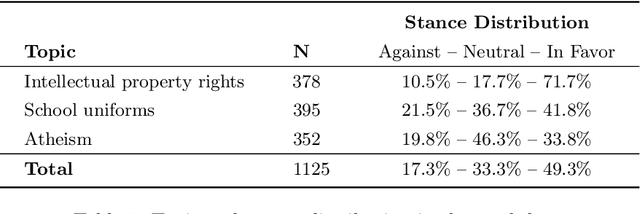
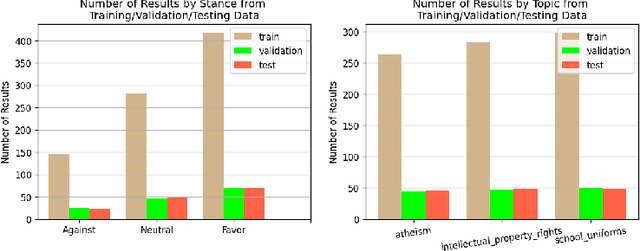
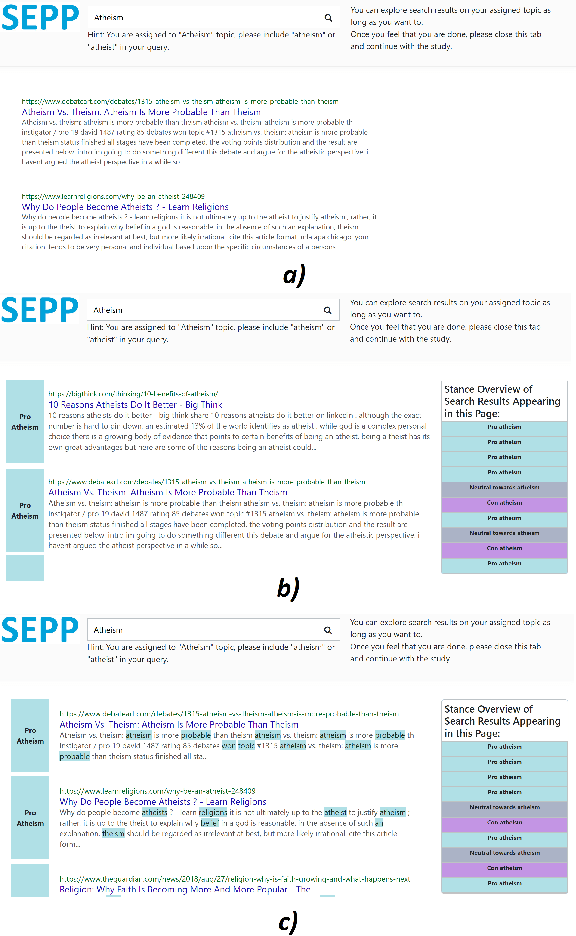

Abstract:People use web search engines to find information before forming opinions, which can lead to practical decisions with different levels of impact. The cognitive effort of search can leave opinionated users vulnerable to cognitive biases, e.g., the confirmation bias. In this paper, we investigate whether stance labels and their explanations can help users consume more diverse search results. We automatically classify and label search results on three topics (i.e., intellectual property rights, school uniforms, and atheism) as against, neutral, and in favor, and generate explanations for these labels. In a user study (N =203), we then investigate whether search result stance bias (balanced vs biased) and the level of explanation (plain text, label only, label and explanation) influence the diversity of search results clicked. We find that stance labels and explanations lead to a more diverse search result consumption. However, we do not find evidence for systematic opinion change among users in this context. We believe these results can help designers of search engines to make more informed design decisions.
Designing Explanations for Group Recommender Systems
Feb 24, 2021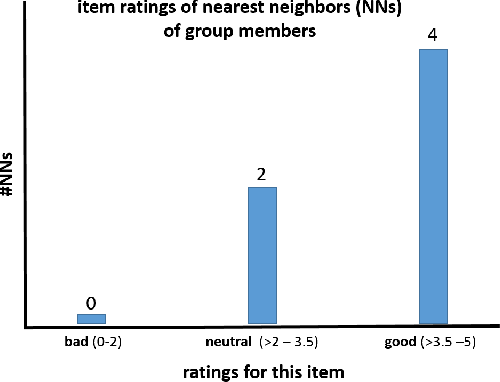
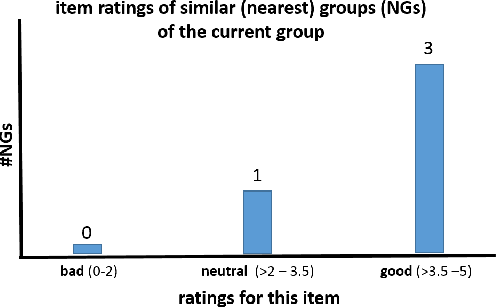
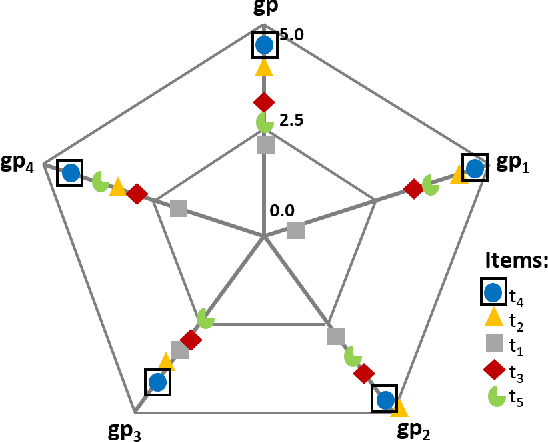

Abstract:Explanations are used in recommender systems for various reasons. Users have to be supported in making (high-quality) decisions more quickly. Developers of recommender systems want to convince users to purchase specific items. Users should better understand how the recommender system works and why a specific item has been recommended. Users should also develop a more in-depth understanding of the item domain. Consequently, explanations are designed in order to achieve specific \emph{goals} such as increasing the transparency of a recommendation or increasing a user's trust in the recommender system. In this paper, we provide an overview of existing research related to explanations in recommender systems, and specifically discuss aspects relevant to group recommendation scenarios. In this context, we present different ways of explaining and visualizing recommendations determined on the basis of preference aggregation strategies.
 Add to Chrome
Add to Chrome Add to Firefox
Add to Firefox Add to Edge
Add to Edge